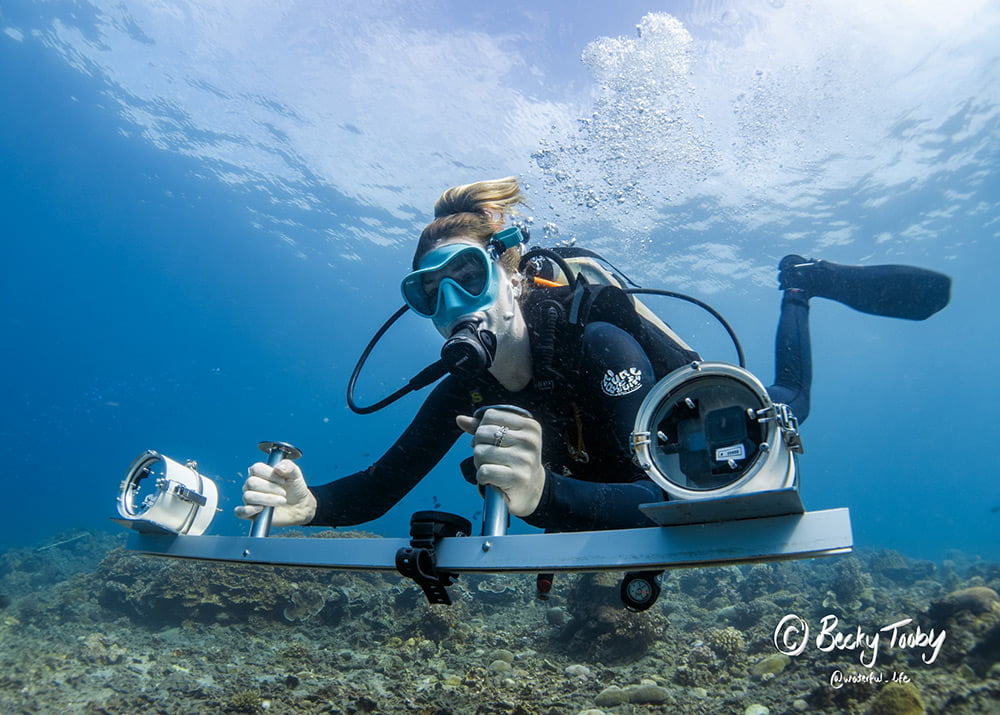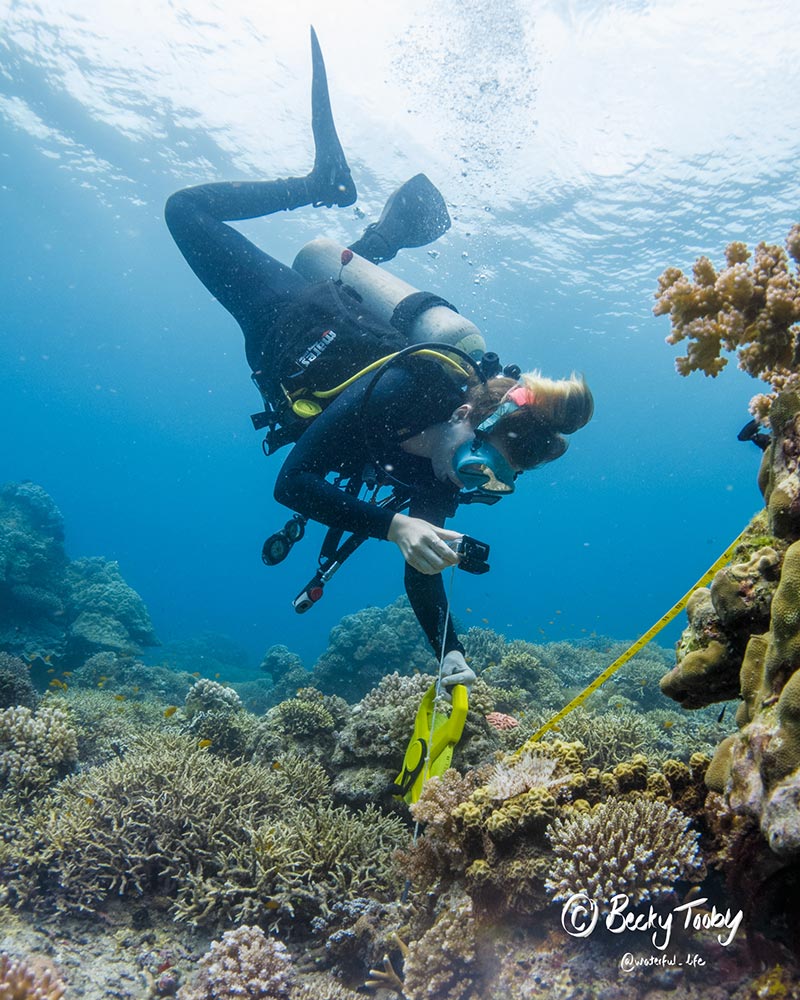I arrived in the Philippines with the aim of developing my research portfolio. As a recent zoology graduate, my hope was to develop the skills needed to pursue a career in conservation, focusing on coral reef ecology. Fortunately, I was already in Dauin when the global pandemic began, so when I first came across IMR, it felt like I had met an organisation that was everything I was looking for. Many things drew me to IMR, from their use of fine scale research techniques to their highly experienced staff members. However, the main standout for me was their sheer enthusiasm and excitement for novel research, which to put it bluntly was inspiring, always making me feel as though my research aims were very much achievable.
Fast forward to the present and I am currently writing up my own independent research project. The question: How do damselfish respond to changes in 3D structure?. Reflecting on the journey to get to this stage, it has taken a lot of planning, problem solving and commitment. Starting at the beginning, I needed to review the literature to develop my research questions and plan my methodology. Throughout these early stages Jennifer (Head of Science) was the perfect sound board, helping to bounce ideas around and asking tough questions to ensure little details have been well thought out. That is not to say she will give you the answers, that is very much something you must work out- all a part of developing project management skills.

Once the initial planning was complete, it was time to start the pilot studies – fine tuning the methodology to ensure it was feasible. In an ideal world things go according to plan. I was not naive in thinking this would be the case with field work, there are far too many variables. After some troubleshooting, I came to a finalised methodology. The main things I learnt through this process; you need to be responsive to adapt and come up with solutions to ensure the research aims are viable.
My data collection consisted of two dives and two divers (myself and either Jennifer or Becky (Head of Dive Operations)) per three replicates. Data was collected from 5 by 5m plots laid out during dive one, with data collection for benthic composition. Dive two was dedicated to the fish survey component and 3D modelling. By the end of data collection, we were all a very well-oiled machine. Although the focus of each dive was on data collection, it did not stop us from having some pretty epic wildlife encounters along the way. For example, two day octopuses courting and hunting in the middle of one of our survey plots! I’m pretty obsessed with cephalopods so this made for some high-level distraction, although of course I still made sure all data was collected with quality and concentration! Even with some challenging dive and weather conditions, we hit my target for data collection, which would not have been possible without Jennifer and Becky’s dedication and assistance (so big thanks gang).
Developing my project with IMR was a privilege and has allowed me to further develop an array of skills needed for effective project management. They were helpful and professional every step of the way, whilst also making me feel very much at home. I would definitely recommend checking them out, mainly for Anna-Lynn’s world famous pumpkin balls but I won’t divulge too much, as that would need its own dedicated blog post!



